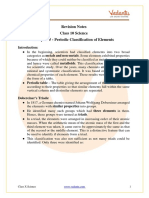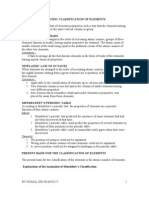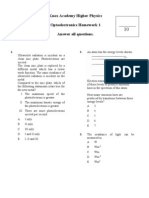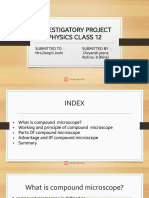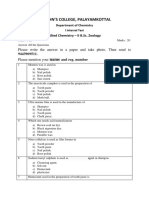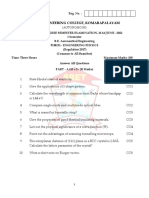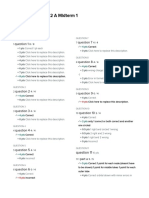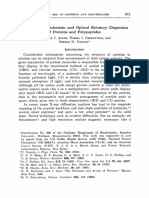0% found this document useful (0 votes)
30 views5 pagesClassification of Elements and History
The document discusses the periodic classification of elements, detailing historical methods such as Dobereiner’s Triads, Newlands’ Law of Octaves, and Mendeleev’s Periodic Table, which laid the foundation for modern periodic law based on atomic numbers. It highlights the structure of the modern periodic table, including its organization into periods and groups, and the significance of electronic configuration in determining an element's position. Additionally, it addresses atomic size trends and the metallic-nonmetallic character of elements.
Uploaded by
aryan2525gaikwadCopyright
© © All Rights Reserved
We take content rights seriously. If you suspect this is your content, claim it here.
Available Formats
Download as PDF, TXT or read online on Scribd
0% found this document useful (0 votes)
30 views5 pagesClassification of Elements and History
The document discusses the periodic classification of elements, detailing historical methods such as Dobereiner’s Triads, Newlands’ Law of Octaves, and Mendeleev’s Periodic Table, which laid the foundation for modern periodic law based on atomic numbers. It highlights the structure of the modern periodic table, including its organization into periods and groups, and the significance of electronic configuration in determining an element's position. Additionally, it addresses atomic size trends and the metallic-nonmetallic character of elements.
Uploaded by
aryan2525gaikwadCopyright
© © All Rights Reserved
We take content rights seriously. If you suspect this is your content, claim it here.
Available Formats
Download as PDF, TXT or read online on Scribd
/ 5














